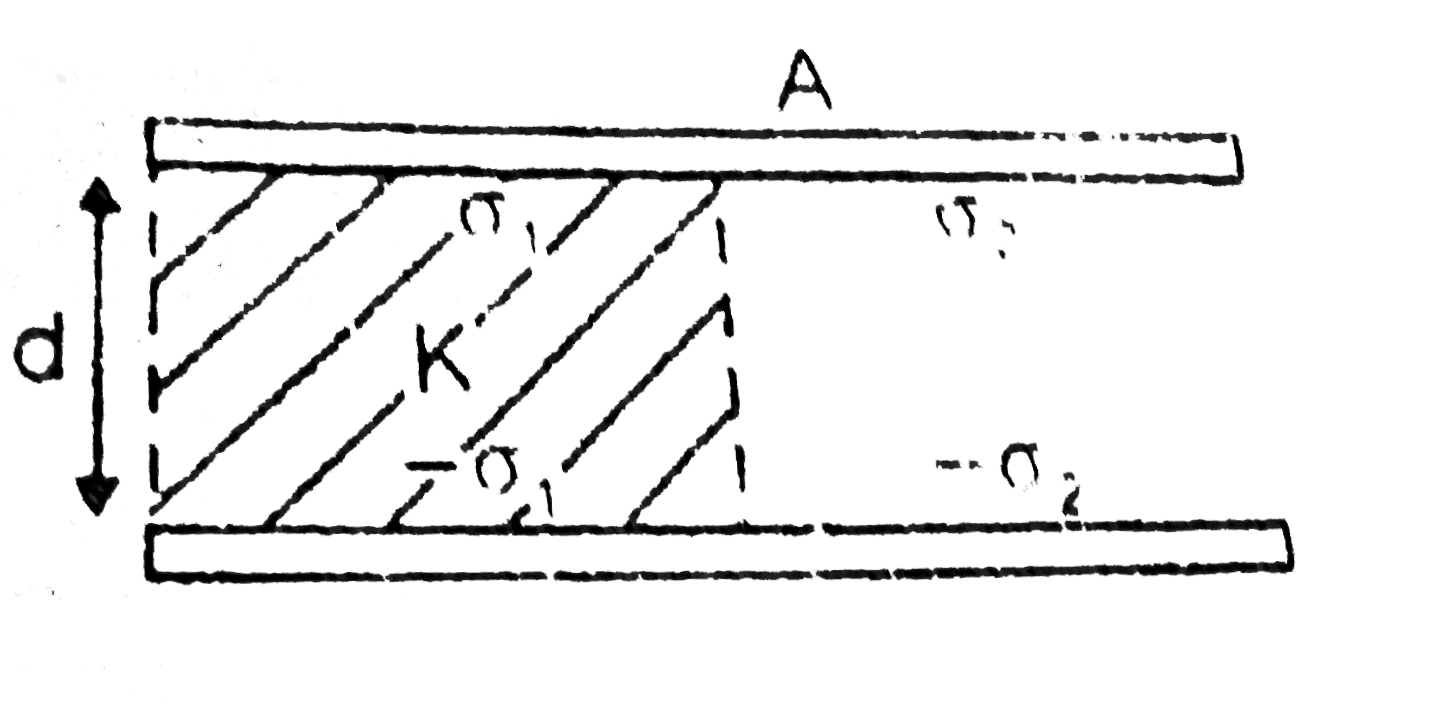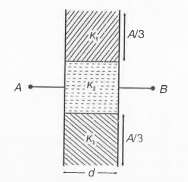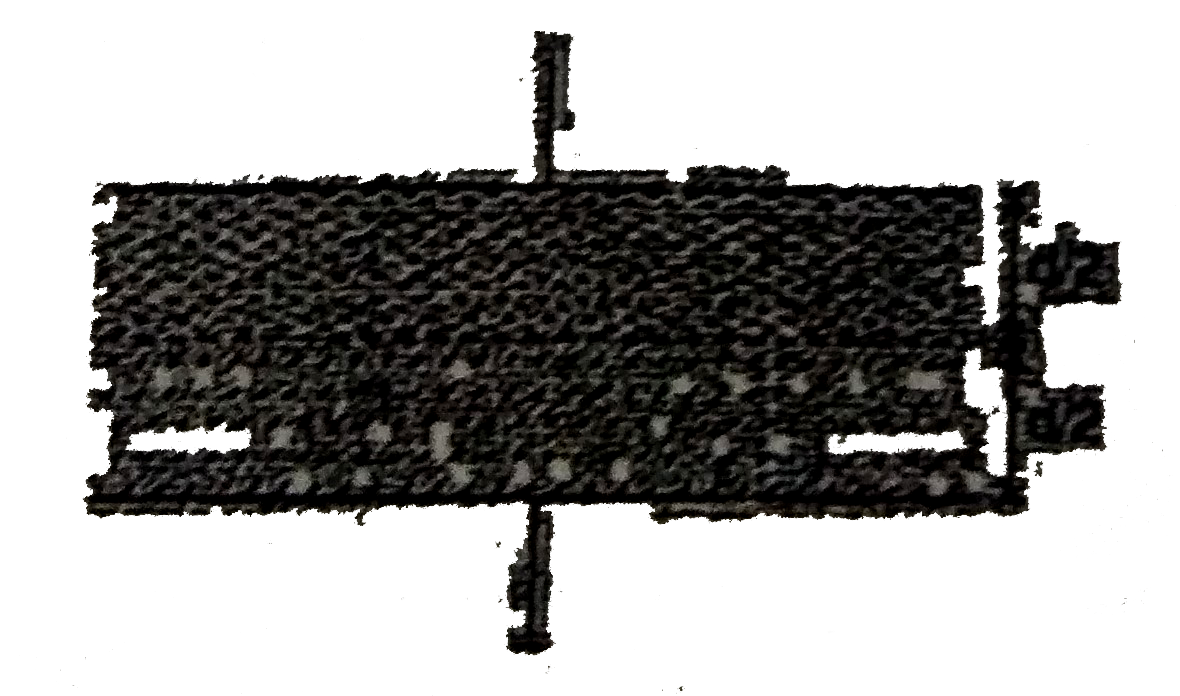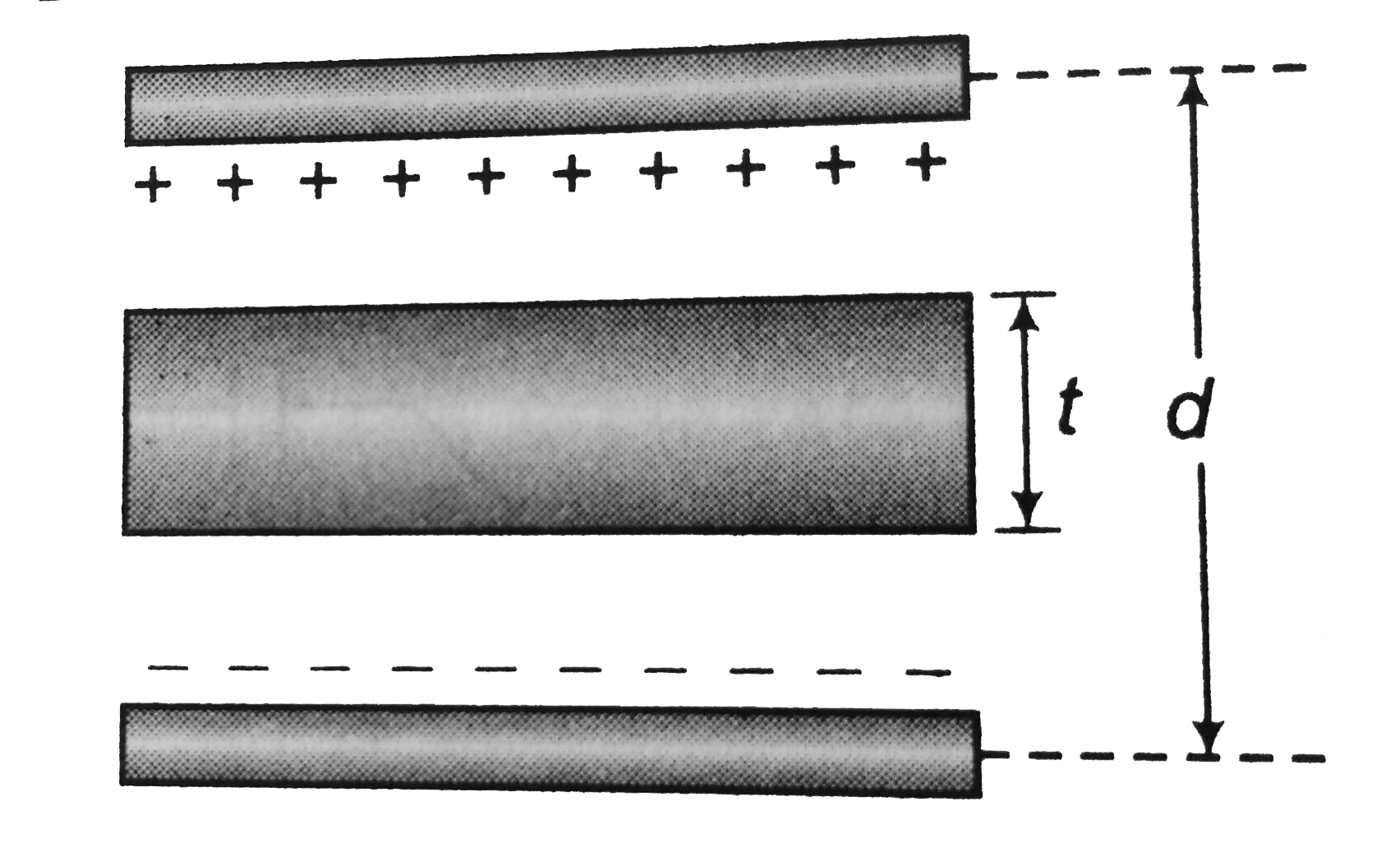A parallel plate capacitor of area A and separation d is charged to potential difference V and removed from the changing source. A dielectric slab of constant K =2, thickness d and are area A2 is inserted, as shown in the figure. Let σ1 be free charge density at the conductor-dielectric surface and σ2 be the charge density at the conductor-vacuum surface

The electric field have same value inside the dielectric as in the free space between the plates
The ratio σ1σ2 is equal to 21
The new capcitance is 3∈0A2d
The new potential difference is 23V
The correct Answer is:A, B, C, D
Potential for each plate remain same over whole area. If potential difference between them is, say V' then V' = Ed
i.e. E is also same inside the plates to keep E same, free charge density is changed i.e charge redistributes itself
To find new capacitance two capacitors can be taken as connected in parallel. Then
−K.∈0A/2d+∈0A/2d=3∈0A2d
By Q=CV, as Q remains unchanged V is changed to 23V.
Topper's Solved these Questions
- BOOK - RESONANCE ENGLISHCHAPTER - DAILY PRACTICE PROBLEMEXERCISE - DPP No.559videos
DAILY PRACTICE PROBLEM
- BOOK - RESONANCE ENGLISHCHAPTER - DAILY PRACTICE PROBLEMEXERCISE - DPP No.5620videos
DAILY PRACTICE PROBLEM
- BOOK - RESONANCE ENGLISHCHAPTER - DAILY PRACTICE PROBLEMEXERCISE - DPP No.5320videos
DAILY PRACTICE PROBLEM
- BOOK - RESONANCE ENGLISHCHAPTER - CURRENT ELECTRICITYEXERCISE - High Level Problems (HIP)19videos
CURRENT ELECTRICITY
- BOOK - RESONANCE ENGLISHCHAPTER - ELECTRO MAGNETIC WAVESEXERCISE - Exercise 327videos
ELECTRO MAGNETIC WAVES
Similar Questions
A parallel plate capacitor of area A and separation d is charged to potential difference V and removed from the charging source. A dielectric slab of constant thickness d and area A2 is inserted, as shown in the figure. Let σ1 be free charge density at the conductor-dielectric surface and σ2 be the charge density at the conductor-vacuum surface. The incorrect statement is
 View Solution
View SolutionA pararllel plate capacitor has plates of area A and separation d and is charged to potential diference V. The charging battery is then disconnected and the plates are pulle apart until their separation is 2d. What is the work required to separate the plates?
View Solution
Knowledge Check
- Question 1 - Select One
A parallel plate capacitor of capacity 5μF and plate separation 6cm is connected to a 1V battery and is charged. A dielectric of dielectric constant 4 and thickness 4cm is introduced into the capacitor. The additional charge that flows into the capacitor from the battery is.
A2μCB3μCC5μCD10μC
A parallel - plate capacitor of plate area A and plate separation d is charged to a potential difference V and then the battery is disconnected . A slab of dielectric constant K is then inserted between the plate of the capacitor so as to fill the space between the plate .Find the work done on the system in the process of inserting the slab.
View SolutionA parallel plate capacitor of plate area A and plate separation d is charged to potential difference V and then the battery is disconnected. A slab of dielectric constant K is then inserted between the plates of the capacitor so as to fill the space between the plates. If Q, E and W denote respectively, the magnitude of charge on each plate, the electric field between the plates (after the slab is inserted), and work done on the system, in question, in the process of inserting the slab, then
View SolutionA parallel plate capacitor of plate area A and separation d filled with three dielectric materials as show in figure. The dielectric constants are K1, K2 and K3 respectively. The capacitance across AB will be :
 View Solution
View SolutionA parallel plate capacitor of plate area A and separation d is filled with two materials each of thickness d2 and dielectric constants ∈1 and ∈2 respectively. The equivalent capacitance will be
 View Solution
View SolutionA parallel plate capacitor each with plate area A and separation ‘d’ is charged to a potential difference V. The battery used to charge it is then disconnected. A dielectric slab of thickness d and dielectric constant K is now placed between the plates. What change if any, will take place in
(i) charge on the plates
(ii) electric field intensity between the plates,
(iii) capacitance of the capacitor
Justify your answer in each caseView SolutionFigue shows a parallel plate capacitor with plate area A and plate separation d. A potential difference is being applied between the plates. The battery is then disconnected and a dielectric slab of dieletric constant K is placed in between the plates of the capacitor as shown.

The electric field in the dielectric slab isView SolutionA parallel plate capacitor of plate area A and plates separation distance d is charged by applying a potential V0 between the plates. The dielectric constant of the medium between the plates is K. What is the uniform electric field E between the plates of the capacitor ?
View Solution

